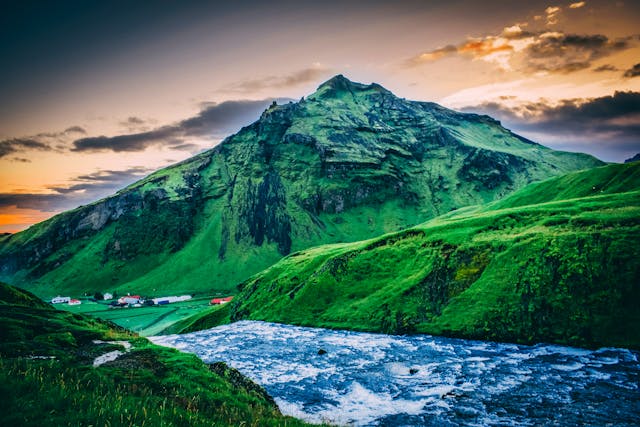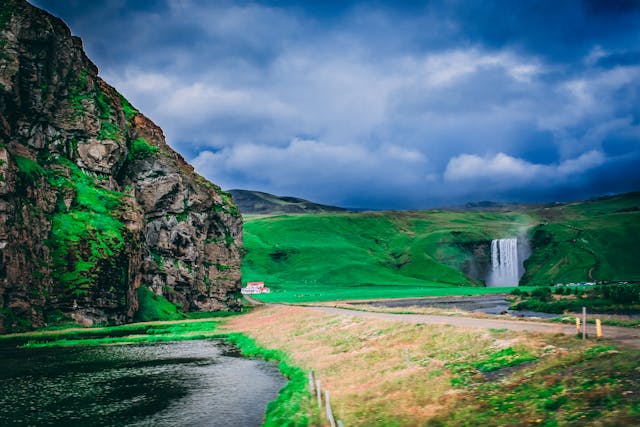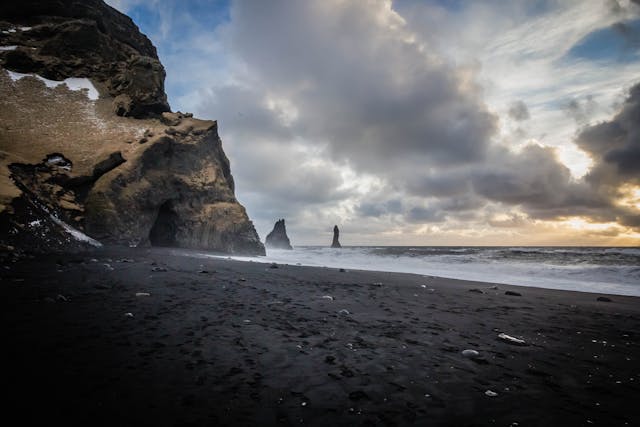Iceland is known for its breathtaking landscapes, unique culture, and the chance to witness the Northern Lights. However, with its unpredictable weather, visitors often wonder when the best time to visit Iceland is. The answer to this question largely depends on what travelers hope to experience during their trip.
For those who want to witness the Northern Lights, the best time to visit Iceland is from September to mid-April. During these months, the nights are longer, providing more opportunities to see the aurora borealis. However, visitors should be prepared for cold temperatures and the possibility of snow. On the other hand, those who want to experience Iceland’s warmer weather and longer days should plan their trip between May and August. This is also the best time for outdoor activities such as hiking and camping.
Booking a campervan adds ease to your plans to fully enjoy the outdoors in Iceland and get to your desired destinations. The van should make for a cozy, functional home at the end of each day and anytime the weather changes. Campers are also equipped for winter travel and related activities, such as chasing the northern lights. Indeed campervanning is a popular activity in Iceland, so you have plenty of options for a rental van in Iceland.

Understanding Iceland’s Seasons
Iceland’s location near the Arctic Circle means it experiences unique seasonal changes that can significantly impact your travel experience. Understanding the country’s seasons is crucial in planning a trip that suits your preferences and interests.
Summer: Advantages and Disadvantages
Summer in Iceland spans from June to August and is the peak tourist season. The weather is mild, and temperatures can range from 10°C to 15°C. The days are long, with almost 24 hours of daylight in June, and the midnight sun is a unique experience that attracts many visitors.
Summer is the best time to spot puffins and whales, as they migrate to Iceland’s shores during this season. However, the high tourist influx can make popular attractions crowded, and prices for accommodation and activities can be higher than usual.
Winter: Northern Lights and Snowscapes
Winter in Iceland is from December to February, and it’s the best time to witness the aurora borealis, also known as the Northern Lights. The snow-covered landscapes and frozen waterfalls create a winter wonderland that’s perfect for outdoor activities like snowmobiling, skiing, and ice caving.
The temperatures can drop to as low as -10°C, but the country’s geothermal spas and hot springs provide a warm and relaxing experience. However, daylight hours are limited, with only a few hours of sunlight each day.
Spring and Fall: Shoulder Seasons
Spring and Fall are the shoulder seasons in Iceland and offer a balance between the summer and winter experiences. The weather is mild, with temperatures ranging from 5°C to 10°C, and the crowds are thinner than in the peak season.
In Spring, the snow begins to melt, and the waterfalls are at their fullest, creating a spectacular sight. Fall brings colorful foliage, and the Northern Lights become visible again. However, the weather can be unpredictable, and some popular attractions may be closed.
Understanding Iceland’s seasons can help you plan your trip according to your preferences and interests. Whether you want to witness the midnight sun, Northern Lights, or enjoy outdoor activities, Iceland has something to offer in every season.

Monthly Breakdown for Visiting Iceland
January: The Heart of Winter
January is the coldest month in Iceland, with temperatures ranging from -1°C to 4°C. However, it is also the best time to see the Northern Lights, as the long nights and clear skies provide ideal conditions. The Winter Lights Festival in Reykjavik is also worth visiting, with illuminations and events throughout the city.
February: Winter Activities Peak
February is the peak of winter activities in Iceland, with ice caves and winter sports being the highlights. The weather is still cold, but the days are getting longer, providing more daylight for exploration.
March: Transitioning Seasons
March marks the transition from winter to spring, with snow still prevalent but temperatures starting to rise. The weather can be unpredictable, but it is a good time for hiking and seeing the snow-covered landscapes.
April: Spring’s Arrival
April is the month when spring arrives in Iceland, with temperatures ranging from 0°C to 7°C. Puffins start to return to the country, making it a great time for birdwatching. Hiking is also popular, with longer daylight hours and milder weather.
May: Mild Weather and Wildlife
May is a great time to visit Iceland, with mild weather and a chance to see whales and puffins. The crowds are still relatively low, and prices are starting to increase as the tourist season approaches.

June: Start of the High Season
June marks the start of the high season in Iceland, with the first day of summer celebrated on the 20th. The midnight sun is also visible, providing 24 hours of daylight in some parts of the country. Festivals and events are also held throughout the month.
July: Full Swing of Summer
July is the peak of summer in Iceland, with warm temperatures and long days. Tourists flock to the country, making it the busiest time of the year. Nature is at its finest, with hiking, wildlife watching, and outdoor activities being popular.
August: Cultural Festivals and Warmth
August is a great time to experience Icelandic culture, with festivals and events held throughout the country. The weather is still warm, and Reykjavik is bustling with activity.
September: Beginning of the Shoulder Season
September marks the beginning of the shoulder season, with fewer tourists and lower prices. The Northern Lights start to become visible again, and fall colors start to appear. The weather can be unpredictable, but it is a good time for hiking and outdoor activities.
October: Fall Colors and Lower Prices
October is a great time to see the fall colors in Iceland, with temperatures ranging from 0°C to 6°C. Prices are also lower, and the crowds are smaller. The Northern Lights are also visible, making it a great time for aurora hunting.
November: Quieter Times and Early Winter
November is a quieter time in Iceland, with the start of winter and fewer tourists. The weather is cold, but the Northern Lights are visible, making it a great time for aurora hunting. Outdoor activities are still possible, but with shorter daylight hours.
December: Christmas Festivities and Polar Nights
December is a festive time in Iceland, with Christmas celebrations throughout the country. The weather is cold, and the days are short, with some parts of the country experiencing polar nights. The Northern Lights are also visible, making it a great time for aurora hunting.
I hope this helps you figure out the best time to visit Iceland for your travel goals. No matter what time of year you visit, I’m sure you’ll fall in love with this magical country and all it has to offer.



